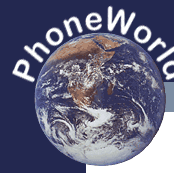


|
ADSL Join the super highway.
What actually is 'ADSL' ? Asymmetric Digital Subscriber Line (ADSL), a modem technology, converts existing twisted-pair telephone lines into access for multimedia and high-speed data communications. ADSL is literally transforming the existing public information network from one limited to voice, text and low resolution graphics to a powerful, ubiquitous system capable of bringing multimedia, including full motion video, to everyone's home. ADSL connections stay always 'on', the service is 'always available'. End-users don't need to dial in or wait for call set-up.
VDSL VDSL stands for 'Very high bit-rate Digital Subscriber Line'. VDSL operates over the copper wires in your phone line in much the same way that ADSL does, but there are a couple of distinctions. VDSL can achieve incredible speeds, as high as 52 Mbps downstream (to your home) and 16 Mbps upstream (from your home). That is much faster than ADSL, which provides up to 8 Mbps downstream and 800 Kbps (kilobits per second) upstream. But VDSL's amazing performance comes at a price: It can only operate over the copper line for a short distance, about 4,000 feet (1,200 m). The key to VDSL is that the telephone companies are replacing many of their main feeds with fiber-optic cable. In fact, many phone companies are planning Fiber to the Curb (FTTC), which means that they will replace all existing copper lines right up to the point where your phone line branches off at your house. At the least, most companies expect to implement Fiber to the Neighborhood (FTTN). Instead of installing fiber-optic cable along each street, FTTN has fiber going to the main junction box for a particular neighborhood. By placing a VDSL transceiver in your home and a VDSL gateway in the junction box, the distance limitation is neatly overcome. The gateway takes care of the analog-digital-analog conversion problem that disables ADSL over fiber-optic lines. It converts the data received from the transceiver into pulses of light that can be transmitted over the fiber-optic system to the central office, where the data is routed to the appropriate network to reach its final destination. When data is sent back to your computer, the VDSL gateway converts the signal from the fiber-optic cable and sends it to the transceiver. All of this happens millions of times each second! Join the super highway.
Fiber Optic Communications Get information about Fiber Optic Communications (external link) |
Swiss Services Worldwide Services Sign-Up Now About Us Contact Us Home